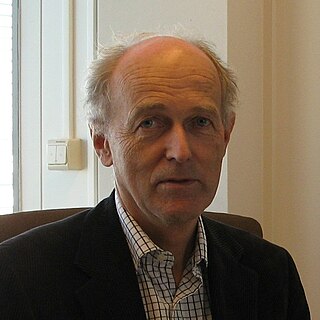
A data model is an abstract model that organizes elements of data and standardizes how they relate to one another and to the properties of real-world entities. For instance, a data model may specify that the data element representing a car be composed of a number of other elements which, in turn, represent the color and size of the car and define its owner.
Terence Aidan (Terry) Halpin is an Australian computer scientist who is known for his formalization of the Object Role Modeling notation.

Object–role modeling (ORM) is used to model the semantics of a universe of discourse. ORM is often used for data modeling and software engineering.
The International Federation for Information Processing (IFIP) is a global organisation for researchers and professionals working in the field of computing to conduct research, develop standards and promote information sharing.
A conceptual model is a representation of a system. It consists of concepts used to help people know, understand, or simulate a subject the model represents. In contrast, a physical model focuses on a physical object such as a toy model that may be assembled and made to work like the object it represents.

Jean Leonardus Gerardus (Jan) Dietz is a Dutch Information systems researcher, Emeritus Professor of Information Systems Design, and part-time Professor of Enterprise Engineering at the Delft University of Technology, known for the development of the Design & Engineering Methodology for Organizations. and his work on enterprise ontology.
Gerardus Maria "Sjir" Nijssen is a Dutch computer scientist, former professor of computer science at the University of Queensland, consultant, and author. Nijssen is considered the founder of verbalization in computer science, and one of the founders of business modeling and information analysis based on natural language.
T. William (Bill) Olle was a British computer scientist and consultant and President of T. William Olle Associates, England.
John Krogstie is a Norwegian computer scientist, professor in information systems at the Norwegian University of Science and Technology (NTNU) in Trondheim, Norway, and an expert in the field of enterprise modelling.
Colette Rolland is a French computer scientist and Professor of Computer Science in the department of Mathematics and Informatics at the University of Paris 1 Pantheon-Sorbonne, and a leading researcher in the area of information and knowledge systems, known for her work on meta-modeling, particularly goal modelling and situational method engineering.
Ronald K. (Ron) Stamper is a British computer scientist, formerly a researcher in the LSE and emeritus professor at the University of Twente, known for his pioneering work in Organisational semiotics, and the creation of the MEASUR methodology and the SEDITA framework.
NORMA is a conceptual modeling tool that implements the object-role modeling (ORM) method.
Jacobus Nicolaas (Sjaak) Brinkkemper is a Dutch computer scientist, and Full Professor of organisation and information at the Department of Information and Computing Sciences of Utrecht University.
Henk Gerard Sol is a Dutch organizational theorist and Emeritus Professor of Business Engineering and ICT at Groningen University. His research focuses on the development of services enabled by ICT, management information systems, decision enhancement and telematics.

Arne Sølvberg is a Norwegian computer scientist, professor in computer science at the Norwegian University of Science and Technology (NTNU) in Trondheim, Norway, and an expert in the field of information modelling.
Börje Langefors was a Swedish engineer and computer scientist, Emeritus Professor of Business Information Systems at the Department of Computer and Systems Science, Stockholm University and Royal Institute of Technology, Stockholm, and "one of those who made systems development a science."

Adolf Alexander Verrijn Stuart was a Dutch computer scientist, and the first Professor in computer science at the Leiden University from 1969 tot 1991.
Janis Askolds Bubenko junior was a Swedish computer scientist and Professor Emeritus at the Department of Computer and Systems Science, Royal Institute of Technology and Stockholm University.
Henderik Alex (Erik) Proper is a Dutch computer scientist, an FNR PEARL Laureate, and a senior research manager within the Computer Science (ITIS) department of the Luxembourg Institute of Science and Technology (LIST). He is also adjunct professor in data and knowledge engineering at the University of Luxembourg. He is known for work on conceptual modeling, enterprise architecture and enterprise engineering.





